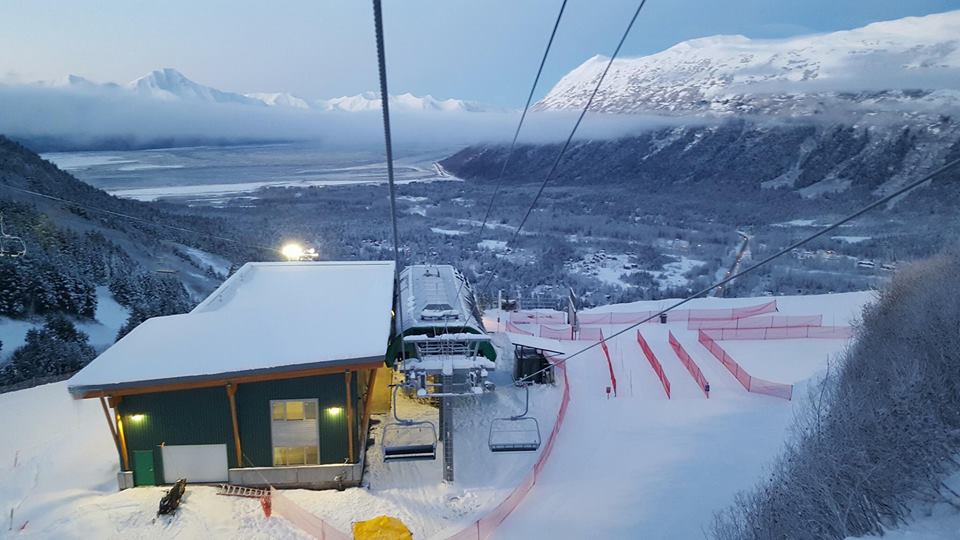Site visits for engineers can be a bit of a mixed blessing. Sometimes you get to inspect an interesting structure on a beautiful day, but frequently you find yourself in a damp underground utility vault, crawling in a dusty attic, or other less than glamorous locales. As someone who spends a lot of time in the mountains, getting the call to evaluate a fire-damaged chairlift structure at Alyeska Ski Resort was the perfect opportunity to erase the memory of a sewage vault site visit from the previous week. I was excited to revisit a place on the mountain I had been many times before, but this time I would be wearing my hard hat instead of my ski helmet.
The Fire
On March 17, 2016 a fire began in the upper mountain chairlift storage building (Chair 6 Barn) at Alyeska Resort, located in Girdwood Alaska. The Girdwood Fire Department utilized snow cats to travel to the high elevation site, and employed the resort’s snow making system to keep the fire contained to the storage barn, and away from the new chairlift infrastructure. After the flames were extinguished, the barn and the sophisticated electronics modules used to operate the lift were declared a total loss. The Resort was able to service the uppermost reaches of the mountain for the remainder of the 2015-16 season utilizing diesel generators to operate the chairlift.
The Aftermath
In April 2016, I provided a post-fire structural assessment that found that the fire originated in a portion of the building being used as a maintenance area. The maintenance area was used for various on-mountain tasks and contained highly flammable materials, such as rigid foam insulation and welding tanks that contributed to a robust and hot fire environment.
The post-fire inspection found that the building experienced a wide diversity of temperatures dependent on location. The intensity of the fire was determined by investigating items damaged by the fire, and correlating the amount of damage to the materials’ ignition temperatures. In the chair barn fire, some foundation elements experienced temperatures of 1100° F as evidenced by the condition of the concrete; and steel framing elements exhibited significant deformation with temperatures likely in the 600° to 1400°F range depending on location.
Getting Back on the Slopes
The facilities’ mid mountain location, in conjunction with a tight timeline, necessitated a creative solution in order to meet the resort’s operational needs prior to the November opening date for the ski season. Discussions with the owner and contractor (Blazy Construction, http://blazycon.com) determined that excavation and concrete work at the site were both cost and time prohibitive. After closely inspecting the existing foundation and original design drawings, Reid Middleton developed a solution that allowed for rehabilitation and re-use of the existing foundation in order to meet the 3 month construction time frame and immediate start date.
The existing network of grade beams, column footings, and existing column bases were re-purposed to support the gravity framing. Due to the difficulty of getting materials up the mountain, where the concrete floor was replaced, a specialized rock hauling truck was used to tow a concrete mixing truck and raw materials up to the site so the concrete could be batch-mixed onsite. The original columns, badly warped from the fire and poorly detailed as a lateral system, were cut off above the floor and used as a base connection for the new gravity-only columns. A new lateral system of metal stud shear walls was designed to work with the existing concrete foundation, and take advantage of readily available materials to reduce procurement times. The uphill end of the barn was stylized by the project Architects (Z Architects, http://www.zarchitectsalaska.com) to better fit the aesthetic of Alyeska Resort.
The team was able to complete this building in time for opening day at Alyeska Resort this winter, allowing the resort to provide skiers and snowboarders with access to the upper reaches of Alaska’s largest and best ski resort.


